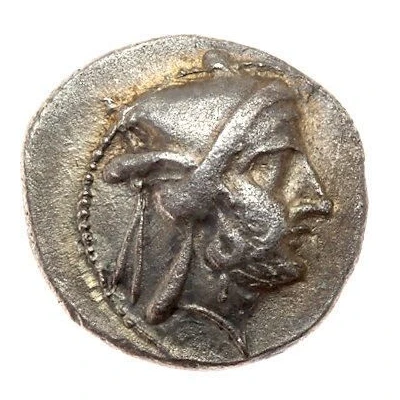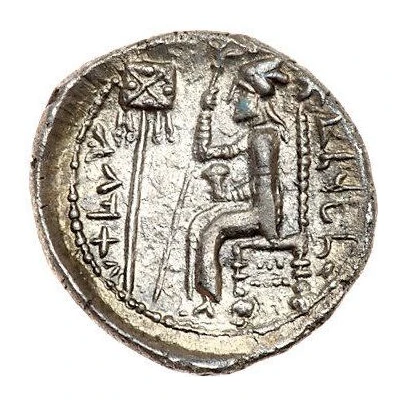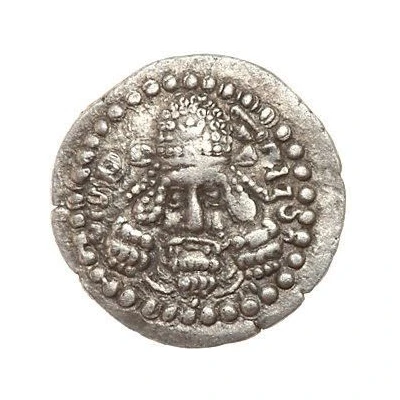


© The New York Sale
Hemidrachm - Bagadates I 164 BC - 146 BC
| Silver | 1.94 g | 14 mm |
| Issuer | Kingdom of Persis (Persian Empires) |
|---|---|
| Dynast | Bagadates I (Baydad) (164 BC - 146 BC) |
| Type | Standard circulation coin |
| Years | 164 BC - 146 BC |
| Value | Hemidrachm (½) |
| Currency | Chian-Rhodian drachm |
| Composition | Silver |
| Weight | 1.94 g |
| Diameter | 14 mm |
| Shape | Round (irregular) |
| Technique | Hammered |
| Orientation | Variable alignment ↺ |
| Demonetized | Yes |
| Updated | 2024-10-10 |
| Numista | N#415921 |
|---|---|
| Rarity index | 100% |
Reverse
King enthroned facing left toward standard, wearing long cloak and kyrbasia, holding sceptre and cup. Inscriptions running vertically at left and right side. Beaded border.
Script: Aramaic
Interesting fact
The Hemidrachm coin was used as a form of currency during the reign of Bagadates I, who was the ruler of the Kingdom of Persis, a region that is now part of modern-day Iran. Despite being made of silver, the coin was not worth a full drachm, which was the standard unit of currency at the time. Instead, it was valued at half a drachm, or 1.94 grams of silver. This unique fact highlights the diverse monetary systems that existed in ancient civilizations and how they adapted to the needs of their economies.



